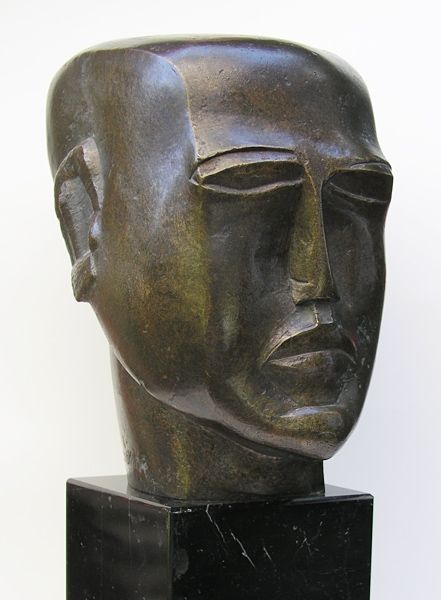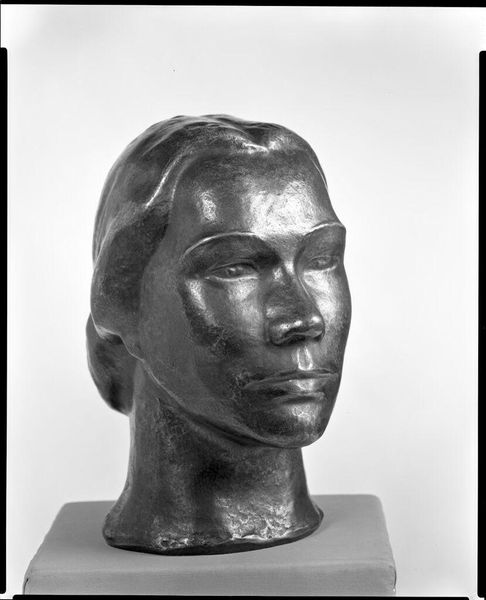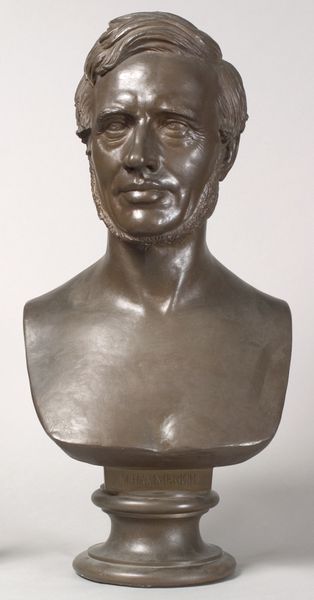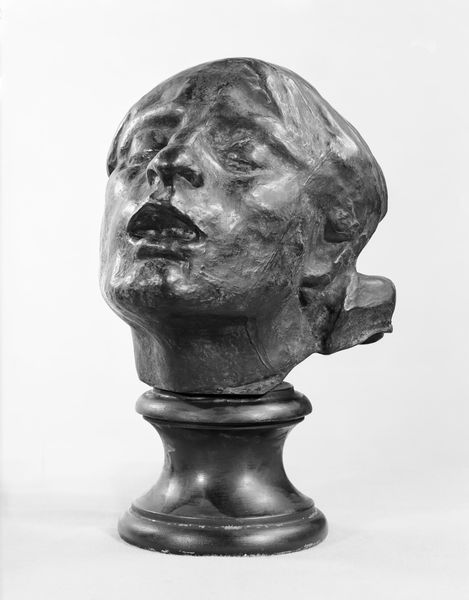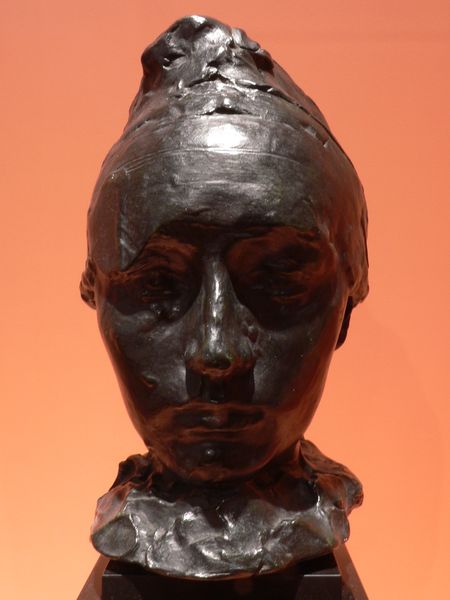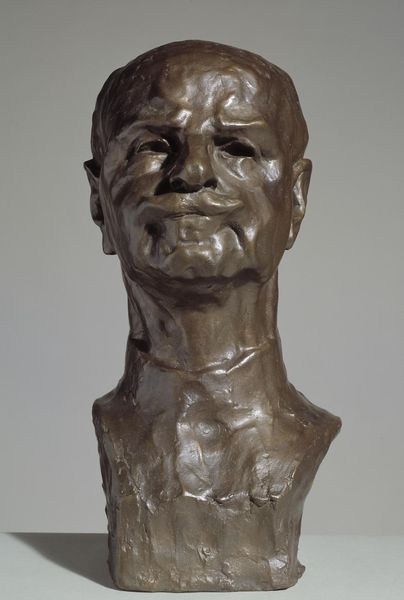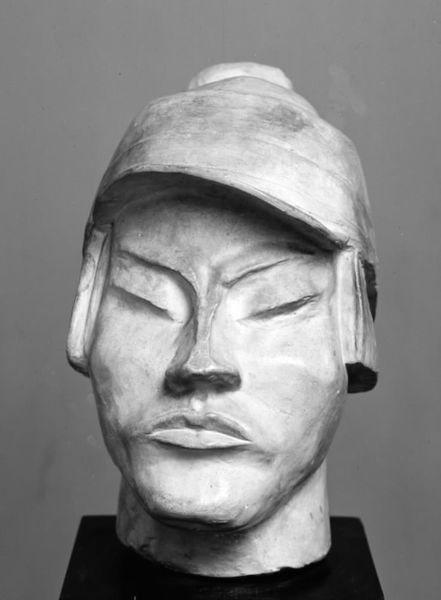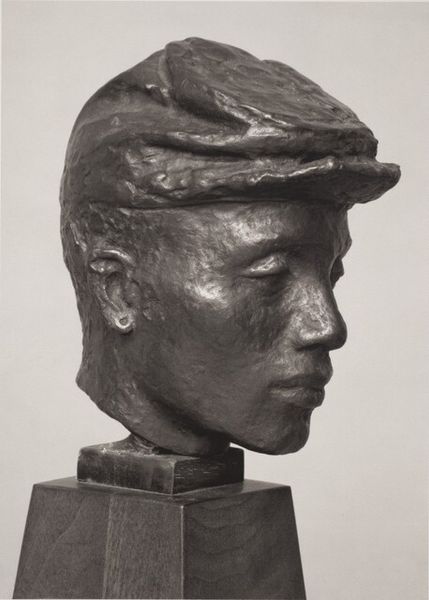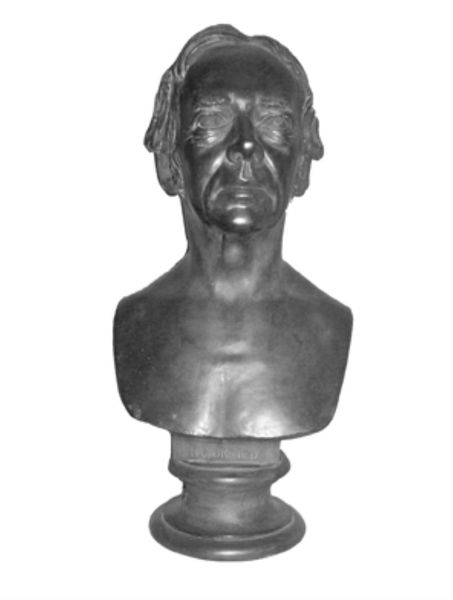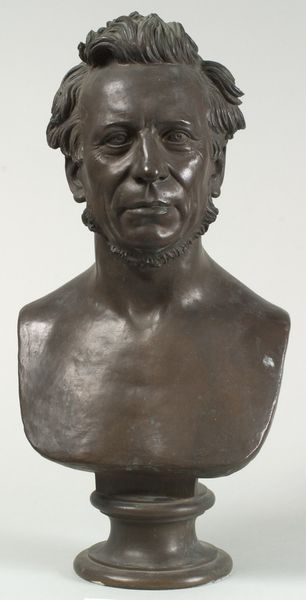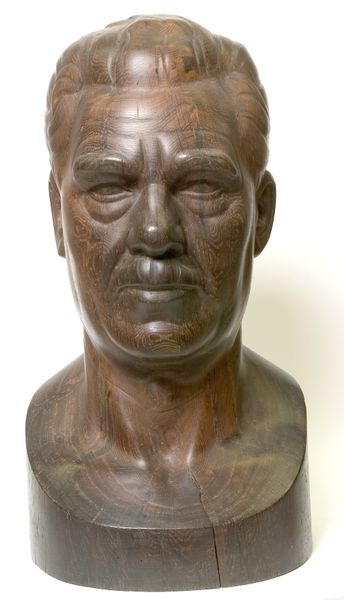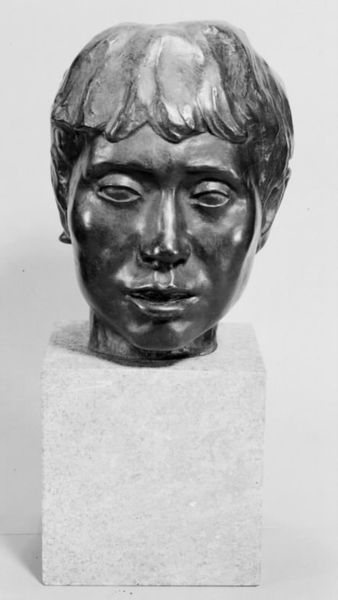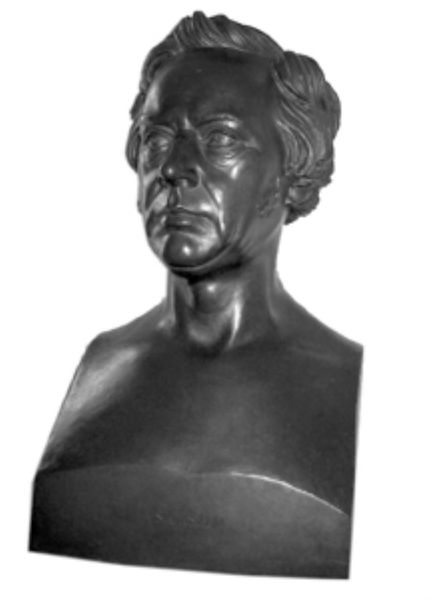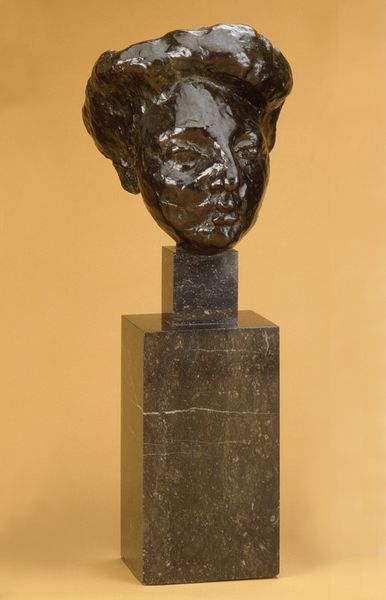
bronze, sculpture
#
portrait
#
sculpture
#
bronze
#
frontview face
#
sculpture
#
black and white
#
realism
Dimensions: 13.6 cm (height) x 9.7 cm (width) x 11.5 cm (depth) (Netto)
Curator: Welcome. We're standing before Svend Rathsack's 1931 bronze sculpture, "Karl, Greenlandic Dog-Team Driver," currently held at the SMK in Copenhagen. Editor: Bronze, eh? It’s got a heaviness to it. A very solid, earthy feel, but the face has an almost mournful quality. Something in the downturn of the mouth, and the almost piercing stare... Curator: Rathsack was known for his realistic style, deeply embedded in the social context of his time. Greenland was still a Danish colony then. Such works were about nation-building and consolidating identity by representing different social groups. Editor: Makes you wonder about the social realities behind the idealized portrait. I mean, look at the detail in the rendering, the modeling of the face itself, almost mask-like in its formality. Bronze casting is no simple task. Was the subject remunerated, or did it reinforce colonial hierarchies of representation and labor? Curator: Absolutely. The politics of representation is critical here. There's the inherent power dynamic of the artist—a well-established Danish sculptor—depicting a Greenlander. But what could that Greenlander do to refuse such an advantageous patronage. Editor: And think about the choice of material, Curator! Bronze casting in the 1930s involved significant industrial infrastructure. Mines for the ore, foundries for smelting. These processes are linked to the same power structures shaping Rathsack's Greenlandic subject. The production speaks volumes. Curator: Exactly, and you've brought us to the interesting intersection of labor and art, where Greenland and Denmark meet on so many levels. The heroic style itself may even reinforce narratives of exploration and national adventure during this historical moment, that perhaps conceal an ugly reality for many. Editor: True. Knowing the work’s production process and material origin helps break the illusion. It turns what appears to be an ethnographic study into a critical tool for re-examining the relationship between Greenland, Denmark, and the art world itself. The labor encoded in the medium demands that we deconstruct what appears natural. Curator: And that's what is great about art, that so much history can be read out of an aesthetic work, a face cast in bronze can lead us on many interpretive adventures if we only accept to ask more. Editor: Precisely. It transforms from merely an artwork to a material document—a witness to historical forces, cultural encounters and inequalities of representation, manufacture and more!
Comments
No comments
Be the first to comment and join the conversation on the ultimate creative platform.
